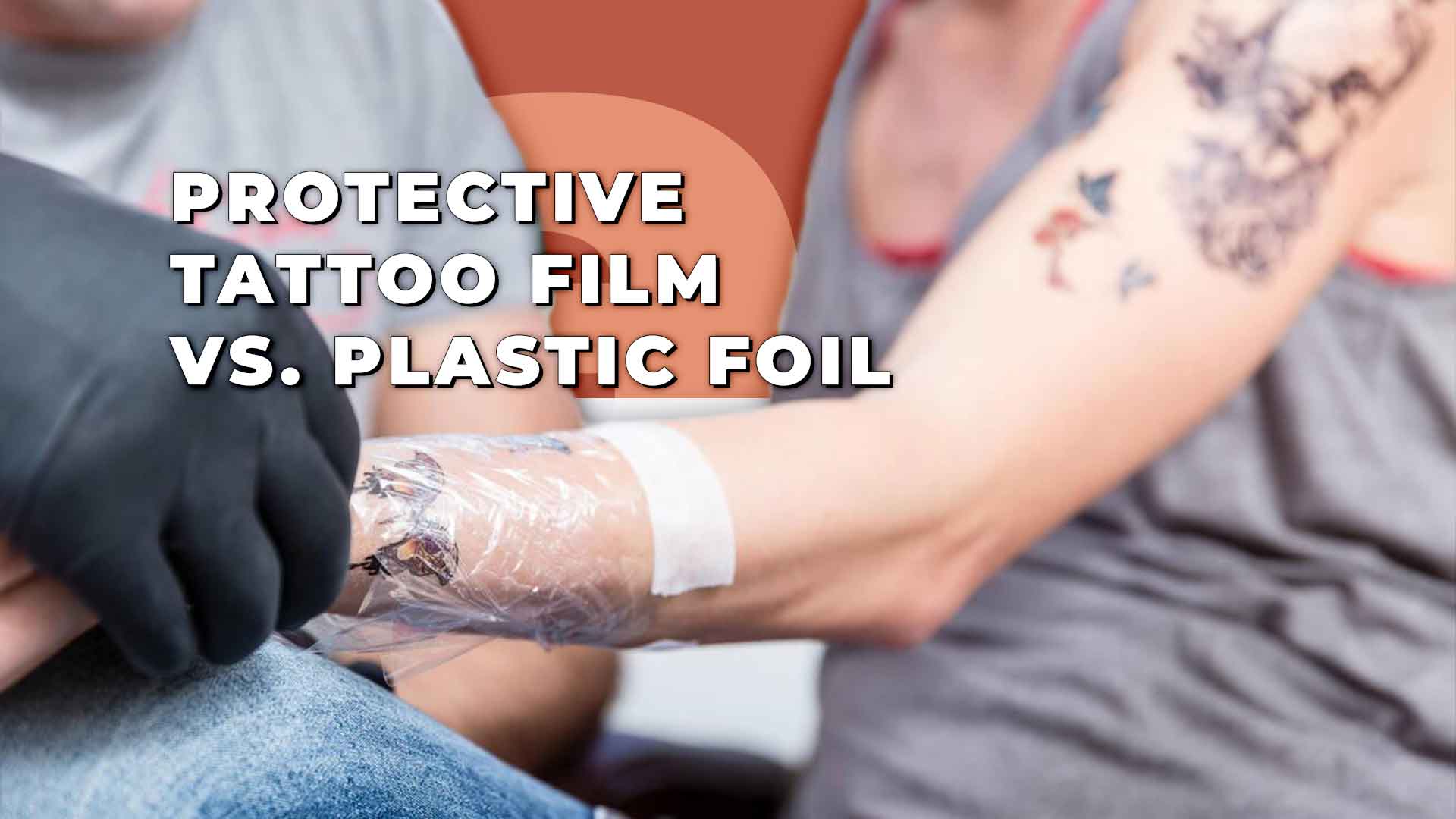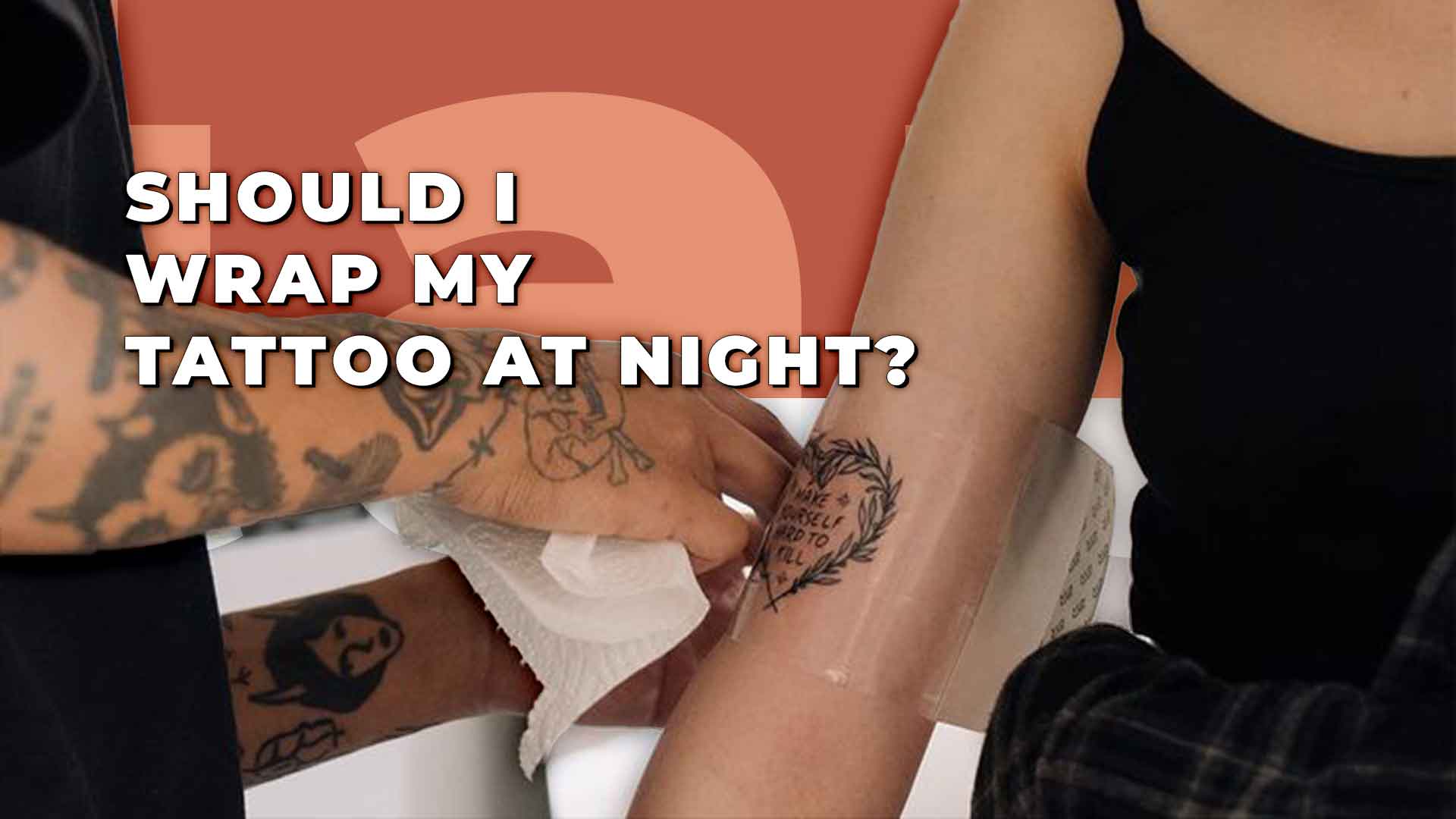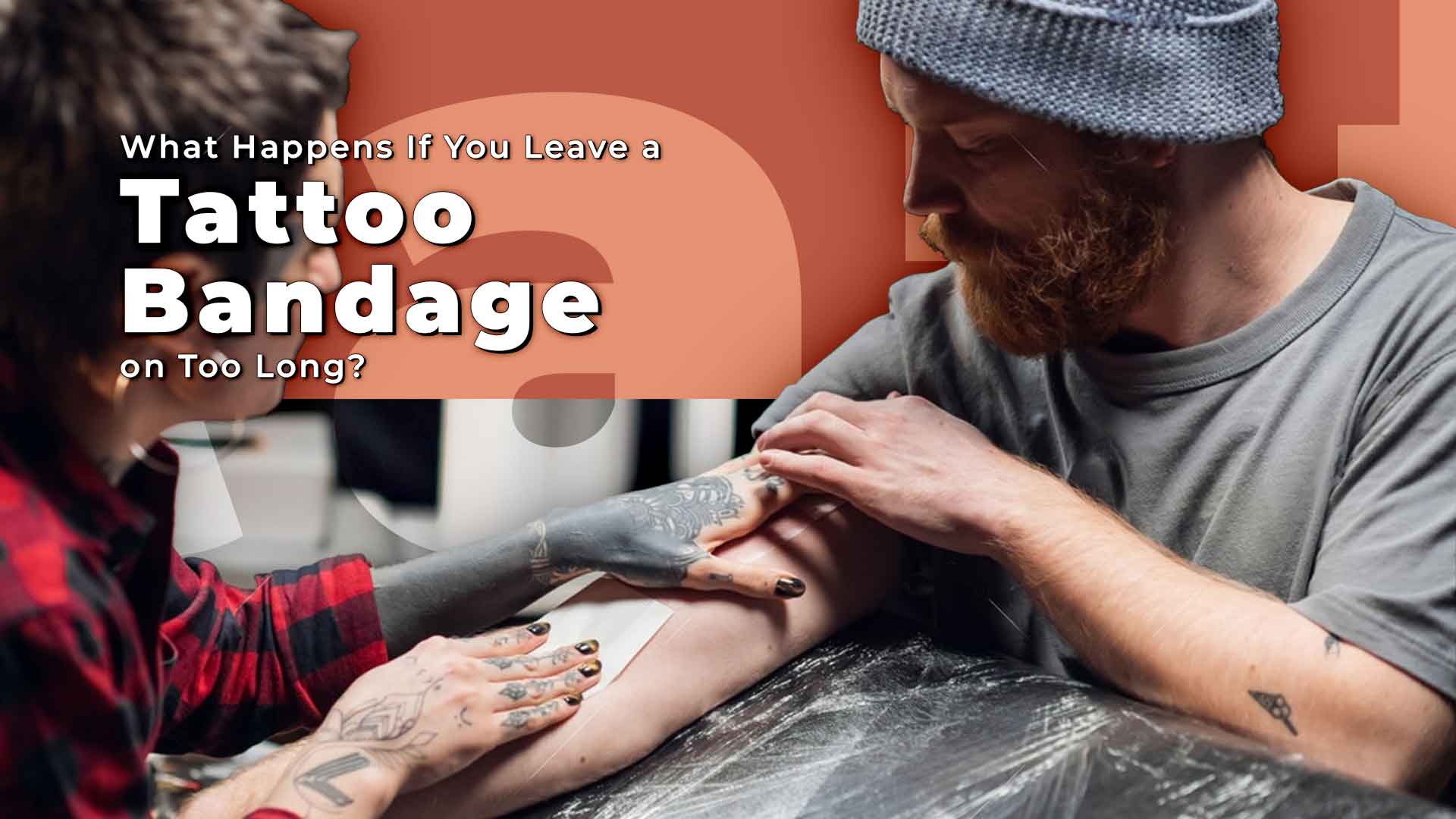Leaving a tattoo bandage on too long can cause multiple negative consequences, including trapping bacteria, delaying the healing process, and causing an adverse reaction to the skin.
Getting a tattoo is a thrilling and satisfying experience, but in the midst of all the excitement, it’s important to pay attention to the significance of aftercare. Proper aftercare involves wrapping your tattoo, and comprehending the timing and duration of this procedure is crucial for effective aftercare.
To ensure that your tattoo heals correctly, it is recommended to keep it wrapped for 2-4 hours after leaving the tattoo parlor. However, if you opt for protective tattoo film instead of plastic foil, you should leave the wrap on for 3-4 days.
We recognize that you may have multiple queries regarding this process, which is why we have provided all the information below. Keep reading to discover more about wrapping your tattoo!
Protective Tattoo Film vs. Plastic Foil

Plastic foil has been a common practice in the tattoo community for many years as a practical and effective way to protect your tattoo from bacteria in the first few hours after leaving the studio.
However, the industry has recently evolved, and new products specifically designed for tattoo care have been introduced, including regenerative tattoo films.
To use a protective tattoo film, your tattoo artist (or you) will apply it to the tattooed area and leave it on for up to five days.
Compared to plastic foil, the benefits of using a protective tattoo film are numerous. It’s more comfortable and prevents bleeding, making it easier to keep your bed clean in the first few days. It also helps your skin regenerate faster, is breathable, waterproof, and easy to apply at home without the need for professional supervision.
Should I keep my tattoo wrapped after the first day?
The answer depends on several factors, such as the location of your tattoo, your healing speed, and the type of product you are using.
If you’re using a protective tattoo film, it’s recommended to keep it wrapped for 3-5 days before removing it and beginning your cleaning routine. If excessive bleeding occurs, remove the film, clean the tattoo with antibacterial soap, and apply a new one.
For those using plastic foil or cling wrap, some tattoo artists suggest keeping the tattoo wrapped for more than one day, especially for larger pieces. However, if your artist recommends keeping the wrap on for an extended period, it’s essential to replace it periodically.
It’s normal to see a build-up of ink and plasma under the wrapping, indicating that the tattoo is healing. If you need to rewrap your tattoo, you can do so with antibacterial soap, medical or micropore tape, and fresh wrap.
How long should I keep my tattoo wrapped?
If you’re wondering how long to keep your tattoo wrapped, the short answer is 2-4 hours if you’re using simple cling wrap (plastic foil) or 3-5 days if you have protective tattoo film.
However, it’s essential to understand that wrapping your tattoo is a crucial step in proper aftercare, and knowing when and how long to cover it is important.
There are differing opinions among tattoo artists regarding when to remove the bandage. Some suggest removing it immediately after leaving the studio, washing the tattoo with warm soapy water, and applying a suitable moisturizer to reduce dryness and accelerate healing. However, this approach should only be considered if you’re not planning to expose your tattoo to public places or bacteria.
Most tattoo artists advise waiting at least a couple of hours before removing the wrap. This allows the skin to settle down and the blood to circulate around the tattoo without causing swelling. In any case, consult with your tattoo artist about the timing and duration of wrapping and follow their advice while staying in touch with them throughout the healing process.
Should I wrap my tattoo at night?

If you’re using regenerative tattoo film, the answer is yes, you should keep your tattoo wrapped at night. However, if you’re using plastic foil, some tattoo artists advise against it as it can be uncomfortable and may increase the risk of infection. They recommend putting on a fresh wrapping before bed for the first night only.
Understand that keeping your tattoo wrapped for extended periods restricts air from reaching the tattoo, hindering the healing process. Some tattoo artists believe that consistently wrapping your tattoo can promote the growth of bacteria on the healing skin. Listen to your tattoo artist’s guidance and inform them if you have any concerns.
What happens if you leave a tattoo bandage on too long?
Leaving a tattoo bandage on for an extended period is not recommended, as it may cause infections rather than protect the tattoo from bacteria. While some may think that leaving the bandage on for an extended time is safe, it can have the opposite effect. Change the bandage regularly, especially if there is a lot of blood or plasma inside the wrap or if it is damaged.
Allowing the skin to breathe is essential for the healing process. Keeping the bandage on for too long can lead to infections and longer healing times as the area under the bandage may become too moist. Moisture can impede the skin’s ability to create a new protective barrier, which is critical for the healing process.
Can I re-wrap my new tattoo?
Most tattoo artists advise against self-rewrapping after removing the initial wrap. This is because the environment in which you’re attempting to re-wrap the tattoo by hand won’t be as sterile as a tattoo studio.
Re-wrapping your tattoo yourself can potentially put your wound at risk. If you apply the secondary wrap poorly on a tattoo that hasn’t been adequately disinfected, bacteria may begin to thrive in the gap between the skin and the wrapper. It’s essential to minimize contact with bacteria as much as possible during the first two weeks after removing the initial wrap, until a new layer of skin appears.
What to do after unwrapping a tattoo?
After you have removed the wrapping from your new tattoo, follow proper aftercare instructions to avoid any potential risks such as infection, scarring, allergies, delayed healing, or design fading. Here are some steps you can take:
- Use a mild, unscented soap to wash the tattooed area under warm water 2-3 times per day. Be gentle when washing and avoid rubbing forcefully to prevent skin damage. Rinse thoroughly and pat dry with a clean, dry towel.
- Apply a water-based ointment immediately after washing. This should be done 2-3 times a day for the first 3-4 days in a thin layer over the tattoo to keep the skin hydrated and prevent itching. After this period, switch to an unscented moisturizer and apply it 2-3 times a day for two weeks.
- Avoid direct sunlight for at least 2-4 weeks, as UV light can cause the tattoo to fade. If you cannot wear loose clothing to protect the tattoo from the sun, consult with your tattoo artist or a dermatologist before applying sunscreen with 30+ SPF to avoid irritation.
- Do not scratch or pick at any scabs that may form on the tattooed area, as this can lead to scarring.
The healing process for a tattoo typically takes two to four weeks, but complete recovery of the skin may take several months. Maintain communication with your tattoo artist in case any negative consequences arise, and seek advice and take action if necessary.
Benefits of wrapping your tattoo

Your tattoo artist may recommend wrapping your tattoo for several reasons, including:
#1 Establishes a sterile environment
Wrapping your tattoo after the procedure creates a clean and sterile environment that helps prevent infection. By adequately moisturizing and cleaning the tattoo before wrapping, you are ensuring a safe healing environment.
#2 Shields against bacteria
The primary benefit of wrapping your tattoo is that it acts as a barrier between your skin and germs or bacteria that can cause infections. This protection can prevent potential issues that can arise from exposure to bacteria or dirt.
#3 Guards against irritants
Certain irritants can compromise the healing process and cause discomfort, such as bedding or rough fabrics. Wrapping your tattoo can help protect your skin from these potential irritants and keep it comfortable during the healing process.
#4 Provides an extra layer of protection
Wrapping your tattoo provides an extra layer of protection from accidental bumps or knocks that can be painful to your healing skin. This layer of protection can help prevent accidental damage to your tattoo while it’s healing.
Summary
In order to properly heal a fresh tattoo, wrapping it is a crucial step. It is recommended to keep the wrap on for 2-4 hours if using cling wrap and 3-5 days if using a protective tattoo film. Avoid re-wrapping the tattoo yourself as it may not be done in a sterile environment. If excessive blood or plasma accumulates under the wrap, it should be changed regularly with the help of your tattoo artist. By following these simple rules, you can ensure the health and beauty of your new body art.

